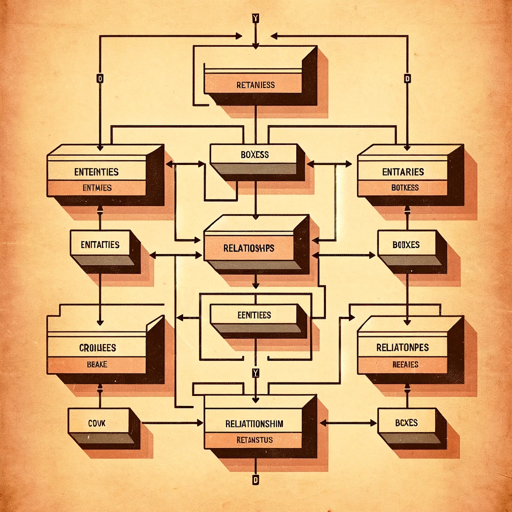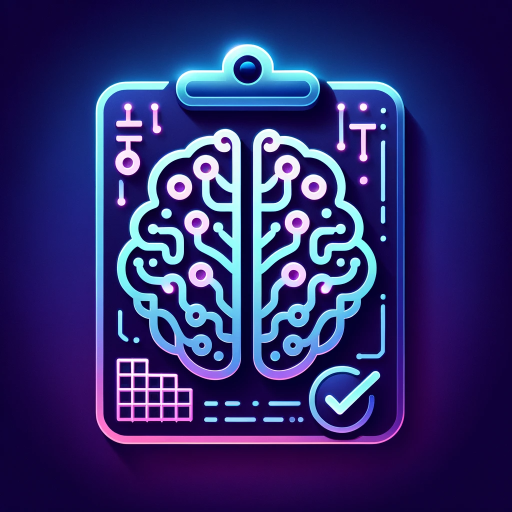Entity Relation mapping-entity relationship mapping tool
AI-powered Entity Relationship Mapping
Related Tools
Load More
Prisma
A Prisma expert that will write complete, clean and scalable Prisma schemas for your database
ERD Engineer
Creates Entity Relationship Diagrams for you next cool app!

ER Diagram Artist
ER Diagram Assistant with graphics
Helps in creating ER diagrams for business processes and display them with the help of an external API

ERD Wizard
Generates detailed ERDs

Drizzle ORM Code Writer and Reviewer
Specializes in Drizzle ORM code writing and review.
20.0 / 5 (200 votes)
Introduction to Entity Relation Mapping
Entity Relation mapping is a structured approach used to illustrate the relationships between different elements within a system or dataset. Its primary function is to visually represent how entities (such as objects, concepts, or data points) are interconnected through various types of relationships. This method helps in understanding the underlying structure and interdependencies within a complex system, making it easier to analyze and manage data. For example, in a database schema, Entity Relation mapping can depict how different tables (entities) are related through primary and foreign keys (relationships), thereby facilitating database design and querying.

Main Functions of Entity Relation Mapping
Data Visualization
Example
Creating diagrams that showcase the relationship between customer data, orders, and products in an e-commerce database.
Scenario
In an e-commerce platform, Entity Relation mapping can help visualize how customer profiles are linked to their order histories and product preferences, aiding in personalized marketing strategies.
Database Design
Example
Designing a relational database for a hospital management system.
Scenario
When designing a hospital management system, Entity Relation mapping can illustrate how patients, doctors, appointments, and medical records are interconnected, ensuring efficient data storage and retrieval.
System Analysis
Example
Analyzing the workflow of an inventory management system.
Scenario
In an inventory management system, Entity Relation mapping can help analyze the workflow by showing how inventory items are tracked, ordered, and restocked, thus optimizing the supply chain process.
Ideal Users of Entity Relation Mapping Services
Database Administrators
Database administrators use Entity Relation mapping to design, manage, and optimize database structures. They benefit from visualizing the relationships between different data entities, which helps in ensuring data integrity and improving query performance.
System Analysts
System analysts employ Entity Relation mapping to understand and document the interactions within a system. This helps in identifying potential issues, improving system efficiency, and ensuring that all components work together seamlessly.
Business Analysts
Business analysts use Entity Relation mapping to gain insights into business processes and data flows. This visual representation aids in identifying areas for improvement, optimizing operations, and making data-driven decisions.

Guidelines for Using Entity Relation Mapping
1
Visit aichatonline.org for a free trial without login, also no need for ChatGPT Plus.
2
Prepare your text by identifying key entities and their relationships within the context of your project or analysis.
3
Use the platform's interface to input the identified entities and relationships, ensuring clarity and accuracy in your annotations.
4
Generate the entity relation map and review it for completeness and accuracy, making adjustments as necessary.
5
Utilize the generated map to enhance your understanding, presentation, or analysis of the data, applying it to relevant use cases such as research, data analysis, or project planning.
Try other advanced and practical GPTs
Web3 Growth Assistant
AI-Powered Insights for Web3 Growth

GPT Auth™
Secure AI Access with Email Verification

A reply guy AI for social networks.
AI-powered tool for smart social replies.

足球之神
AI-powered football analysis tool

Diagram Creator [UPDATED]
AI-powered diagram creation made easy
![Diagram Creator [UPDATED]](https://files.oaiusercontent.com/file-5vYoOfCsbArWXh0K9mJevSc5?se=2123-12-27T08%3A57%3A04Z&sp=r&sv=2021-08-06&sr=b&rscc=max-age%3D1209600%2C%20immutable&rscd=attachment%3B%20filename%3DOIG.jpg&sig=MI%2BTicahiKqSfybxtSuOtKiPMs0oQPtsXPrBa3TZdq8%3D)
Project Manager GPT
AI-powered project management made simple

CROSSVALUE Chainってなに?
AI-powered blockchain for decentralized assets.

SF Symbol GPT
AI-Powered SF Symbol Finder

AI Hippo™ - Ducky Days
Your AI-powered travel and writing companion.

Python Function Generator
AI-powered Python function creation using TDD

Slide Maker and Free Download
Create Stunning Presentations with AI

射雕英雄传:迎娶高富美人生走向巅峰
AI-powered adventure in ancient China

- Research
- Data Analysis
- Project Planning
- Knowledge Management
- Business Modeling
Detailed Q&A on Entity Relation Mapping
What is Entity Relation Mapping?
Entity Relation Mapping is a technique used to visually represent the relationships between different entities within a dataset or context, helping to clarify and organize complex information.
What are common use cases for Entity Relation Mapping?
Common use cases include academic research, business process modeling, data analysis, project planning, and knowledge management.
Do I need any specific tools to create an Entity Relation Map?
While specialized software can enhance the process, you can start by using platforms like aichatonline.org which offer user-friendly interfaces for creating these maps without requiring additional tools or subscriptions.
How can Entity Relation Mapping benefit my research?
Entity Relation Mapping can help organize and visualize the relationships between various components of your research, making it easier to identify patterns, connections, and areas that require further investigation.
Can Entity Relation Mapping be used in business environments?
Yes, it can be used to map out business processes, visualize organizational structures, manage projects, and analyze data relationships, thereby improving decision-making and strategic planning.